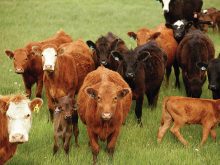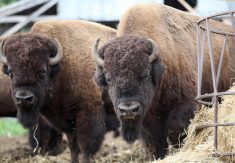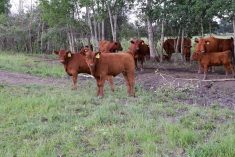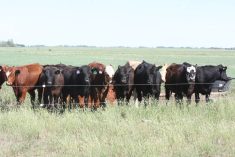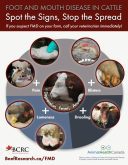Since the beef industry adjusts breeding capacity based on libido, semen production, and length of breeding season, I thought it good to review breeding capacity of bison bulls.
While longevity is longer than beef bulls, we rarely talk about breeding capacity. The bison industry does not utilize artificial insemination like the beef industry (although it can and has been done), and so the value of the good breeding bulls has gone up, as they should.
How best to utilize these highly valued bulls with the performance behind them is the key. Just like the beef industry, the bull represents half the genetics in your herd and certain traits, such as performance and carcass qualities, are quite heritable. Breeding season pretty much starts in August so this article is quite timely.
Read Also

Pig transport stress costs pork sector
Popular livestock trailer designs also increase pig stress during transportation, hitting at meat quality, animal welfare and farm profit, Agriculture and Agri-Food Canada researcher says
In its early stages, the word on breeding in the bison sector was always to run one bull for every 10 cows. We know now that is not the case, but what is their breeding capacity? I will describe some first-hand information on what we find with semen evaluating, and future work that will be done in free-ranging herds. This should help us all decide how to run our herd bulls.
When performing semen evaluations over the years, one thing that was very evident was semen quality (both motility and morphology) was very similar to beef bulls. Their testicle size on average is a lot smaller than beef bulls, but concentration of the semen as well as volume was always more than adequate. There are a percentage of duds or lower-fertile bulls, just as we see in the beef industry, and injuries from being horned can scar up the preputial area such that extension of the penis cannot occur. These bulls need to be culled out much as they would in a cattle operation.
These conditions are much more serious if they occur on the dominant bull in the herd as he may prevent other less dominant bulls from breeding.
Once caught and restrained in a good bison chute, bison are, if anything, easier to semen evaluate than beef bulls.
I use the smallest cattle probe, and low stimulation will usually get protrusion of the penis every time and a good semen sample to evaluate. Rapid swirls are not uncommon. They mature later than beef bulls, so don’t evaluate anything less than 18 months and preferably close to 24 months is the place to start.
There is no question breeding capacity is much higher than the 1:10 ratio already mentioned. Many breeders run in the area of one bull per 20 to 25 cows, and conception rate and calving interval is not sacrificed. In some cases, it is improved because of less fighting and competition between bulls.
I personally have run one group of 25 to 29 cows with one mature bull and have excellent conception and a short calving interval. The worry with a single-sire mating is if the one bull does develop a problem, conception can really be affected, as there is no backup. Also bison cows are very hard to see in heat and it is hard to observe bison bulls breeding, so problems are not detected until later. Rather than taking a chance, most breeders don’t run single-sire groups for that simple reason.
Beaver Creek Ranch on Syncrude property at Fort McMurray registers its wood bison calves, so all calves in the late fall are parentage tested to determine the exact sire. With this information we have breeding capacity information in multi-sire herds.
In the early days, one herd of 72 cows ran with 10 sires. This created lots of competition and breeding pressures. The most dominant bull in this group (an eight-year-old) still managed to sire 24 calves. Five other five- to eight-year-old bulls sired six to eight calves each and some four-year-olds sired one or two calves.
Dominance plays a large role in breeding in our bison herds. Currently there is a genetic researcher in Texas who is going to sample a free-ranging park herd. It will be interesting to see just how the numbers play out. My guess is we will see the dominant bulls doing most of the breeding. As the subordinate bulls get older and stronger, they exert more pressure and at five years plus (when they are at their prime) do more breeding.
In another breeding herd at Beaver Creek with a two-bull breeding group, a five-year-old bred 21 of 26 cows with a four-year-old breeding the remaining five cows. Capacity of these mature bulls is definitely in the range of 25 cows. It appears lots reach peak performance at five years of age.
Further research will tell us when the older bull’s capacity becomes reduced. I personally have tested several bulls over age 10 and semen still had a very high count as long as ability to breed was not hindered by injuries, lameness, etc.
As with beef bulls, it is a mistake to put bulls even in age and stature together. They spend more time sparring to establish pecking order and less time breeding. With a large age difference there is no question as to dominance so fighting rarely starts.
Terrain and size of the pastures will also determine bull-to-cow ratio. If the herd gets split up, you need enough bull power to cover all the groups. Bison naturally breed in the late summer or early fall just as grass quality is diminishing, but conception rates are generally very good. But as with cattle, maintain a good mineral program especially before and at the breeding period.
With all the evidence out there capacity of our bulls can be increased. This should save everyone lots of dollars from overwintering more bulls than necessary. We want bulls breeding and getting pregnancies — not fighting. Therefore, only the top-quality bulls should be used. Select the ones for growth, conformation, and temperament and I am sure you will be happy with the results.
If in doubt over any of the bulls, have them semen evaluated. As long as the chute is adequate to restrain them as already mentioned, they are no more difficult to do than a beef bull. They can even be done in the late fall or winter if that is the only time you handle them.
Happy breeding season and to the continued expansion of the bison herd in Canada.
Some beef producers run both livestock, and others have made the transition over from cattle. The fencing needs and handling are slightly different. There is also, like beef cattle, a bison code of practice addressing the various aspects of production focusing on animal welfare. All the codes of practice can be accessed by looking at the website of the National Farm Animal Care Council.








